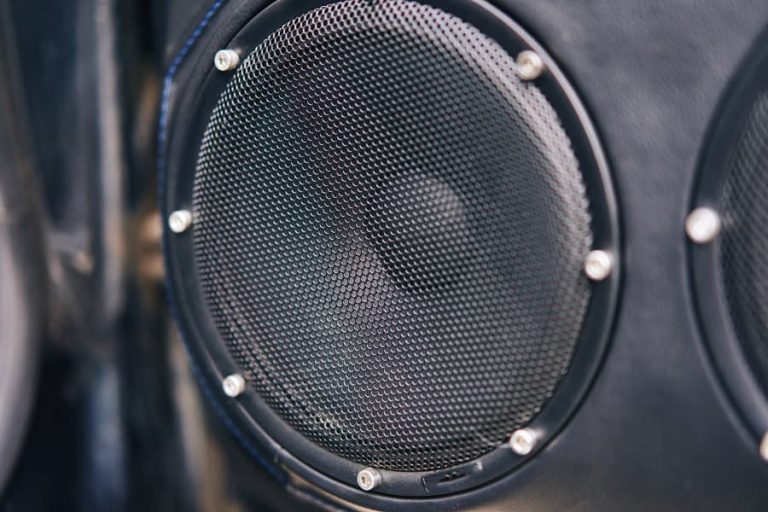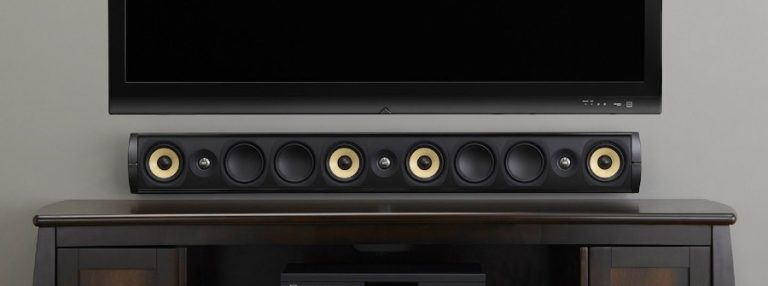How to Connect 4 Speakers to a 1 Channel Amp?
If you have a 1-channel amplifier and want to connect 4 speakers to it, there are a few different ways you can Connect 4 Speakers to a 1 Channel Amp. The most common way is to wire the speakers in parallel. This is done by connecting the positive terminal of each speaker to the positive terminal of the amp, and the negative terminals together.
Another way to wire 4 speakers to a 1 channel amp is in series. This is done by connecting the positive terminal of the first speaker to the positive terminal of the amp, and then connecting the negative terminal of that speaker to the positive terminal of the next speaker. Continue this until all 4 speakers are connected.
Finally, connect the negative terminal of the last speaker to the negative terminal of the amp. Whichever way you choose to wire your speakers, make sure that they are all 8 ohms or higher.
- Decide on the configuration of the speakers
- Connect the positive terminal of the first speaker to the amp’s positive terminal
- Connect the negative terminal of the first speaker to the positive terminal of the second speaker
- Repeat step 3 until all speakers are connected in series
- Connect the last negative speaker terminal to the amp’s negative terminal

Credit: www.wikihow.com
Can a 1 Channel Amp Run 4 Speakers?
A single-channel amplifier cannot power four speakers simultaneously. If you wire two speakers in series, the amplifier will be able to supply enough power to reach the full potential of both speakers. However, the sound quality will not be as good as if each speaker had its own dedicated amplifier channel.
How Many Speakers Can I Connect to a 1 Channel Amp?
How many speakers can I connect to a 1 channel amp? The number of speakers you can connect to a 1 channel amplifier depends on the power output of the amplifier and the impedance of the speakers. Most home theater receivers have a minimum impedance rating of 6 ohms.
If you have 8-ohm speakers, you can usually connect two pairs in parallel to each receiver output. This will present a 4-ohm load to the amplifier, which is within the safe limit for most amplifiers. However, if your amplifier is only rated for 30 watts per channel, it may not be powerful enough to drive four 8-ohm speakers at moderate volumes without distortion.
In this case, you would be better off connecting two pairs of 4-ohm speakers in series-parallel (giving you an 8-ohm total load), which would allow each speaker pair to receive more power from the amplifier.
Can You Wire Multiple Speakers to One Channel?
If you have ever wondered if you can wire multiple speakers to one channel, the answer is yes! While it might seem like a daunting task, wiring multiple speakers to one channel is actually quite simple. All you need is a little bit of patience and some basic knowledge of electrical circuits.
The first thing you need to do is determine how many watts your amplifier can handle. This information can be found in the owner’s manual or on the back of the amplifier itself. Once you know this, you can begin connecting your speakers.
Start by connecting the positive (red) wire from the amplifier to the positive terminal on the first speaker. Then, connect the negative (black) wire from the amplifier to the negative terminal on the first speaker. Repeat this process for each additional speaker until all speakers are connected.
It is important to note that most amplifiers will only allow for a certain number of watts per channel. Therefore, it is important not to overload any one channel by connecting too many speakers. Otherwise, you could damage your amplifier or your speakers.
Now that all of your speakers are wired up, turn on your stereo and enjoy!
How Do I Connect Four Speakers to One Stereo Amplifier Channel?
There are a few ways that you can connect four speakers to one stereo amplifier channel, but it will depend on the amplifier itself and how many channels it has. If you have a two-channel amplifier, then you can wire each pair of speakers in parallel to each channel. That way, both channels will be driving all four speakers.
If your amplifier only has one channel, then you’ll need to wire the four speakers in series-parallel. That means connecting two pairs of speakers in series and then connecting those two pairs in parallel with each other. The impedance of the speakers will drop by half when they’re wired this way, so make sure that your amplifier can handle the lower impedance load.
Another option is to use a speaker selector switch. This is a device that allows you to connect multiple pairs of speakers to one amplifier channel and then select which pair or pairs of speakers you want to use at any given time. This is useful if you have different rooms that you want to be able to listen to music in, or if you want the flexibility to change up the sound depending on your mood or what type of music you’re listening to.
Speaker selector switches typically have impedance matching circuitry built-in so that they can safely drive multiple pairs of low-impedance speakers without damaging your amplifier. Whichever method you choose, just make sure that all of the wiring is done correctly and that your amplifier can handle the number of Speakers connected To It!
How to Connect 4 Speakers to a 1 Channel Amp?
How to Connect 4 Speakers to a 2 Channel Amplifier
If you’re looking to add some extra oomph to your audio setup, you may be wondering how to connect 4 speakers to a 2 channel amplifier. While it’s not the most common configuration, it is possible, and can actually provide some benefits over a more traditional setup. Here’s a quick guide on how to do it.
The first thing you’ll need is an amplifier that has four channels. Not all amplifiers have this – in fact, most only have two – so make sure you check before making any purchase. With the right amplifier in hand, connecting four speakers is relatively straightforward.
Each speaker will need its own pair of wires running from the amplifier. The positive wire (usually red) from each speaker should be connected to the corresponding positive output on the amplifier, while the negative wire (usually black) should be connected to the negative output. If your amplifier only has two outputs, you’ll need to use a ‘Y’ adapter to split the signal into four separate parts.
Once everything is hooked up, turn on your system and enjoy the increased power and clarity that four speakers can provide!
Conclusion
If you’re looking to connect four speakers to a one-channel amplifier, there are a few things you’ll need to do. First, determine the impedance of your speakers. The impedance is the measure of how much electrical resistance there is in the speaker.
You’ll need to know this so that you can properly match it with the amplifier. Second, determine the power handling capacity of your speakers. This will tell you how much power the speaker can handle before it starts to distort the sound.
Third, calculate the total RMS power of your system. This number should be less than the power handling capacity of your speakers. Fourth, connect your positive and negative speaker terminals to the corresponding terminals on your amplifier.
Make sure that all connections are tight and secure so that you don’t experience any interference in your sound quality. Finally, enjoy your music!






